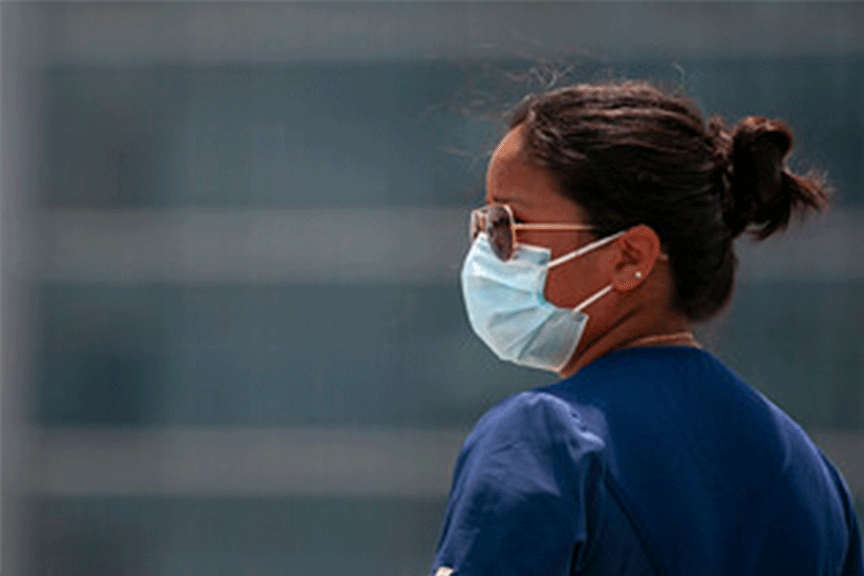Anonymised data from mobile phone networks near hospitals has shown to be a more accurate representation of the spread of Covid-a9 than typical ‘track and trace’ apps
The onset of the Covid-19 pandemic in March 2020 forced governments around the world to take measures to prevent its spread among the population and, thus, reduce the number of fatalities as a result of the virus.
A few months later, as mobility restrictions and confinements were gradually lifted, states decided to launch tracking apps that citizens could download to their cell phones to find out if nearby contacts were infected with Covid.
However, for these apps to be truly effective, they require a large number of people to have them installed on their devices, and they also involve certain privacy risks.
Now an IMDEA Networks research team led by Elisa Cabana (postdoc researcher) and Nikolaos Laoutaris (research professor), in collaboration with Andra Lutu (Teléfonica Research) and Enrique Frías-Martínez (Camilo José Cela University), has carried out a study in which they propose a method that uses mobile network data to detect possible hospitalisations due to Covid-19 and obtain the corresponding epidemic risk maps.
Cabana explains that the main advantage of the proposed solution is that, unlike contact tracing: “the data is already available at the operator and progress is faster. You don’t need to have GPS enabled and an application downloaded.
“When you have mobile data connected, your device connects to a cell tower that identifies your location radius. And that’s how you study the spatio-temporal mobility of people.”
Another plus point is that the method works with anonymised data and can be run on the operator’s premises under its standard security provisions.
See also: Modelling suggests Covid-19 cases and deaths hugely underreported
near a hospital
According to Laoutaris, the method works as follows: “We check the location of a phone late at night and if it is not connected to the usual phone towers it was connected to in the pre-pandemic era, we see if it was connected to a tower near a hospital that is receiving Covid patients.
“If it does, the person who owns the cell phone is labelled as ‘potentially hospitalised’. The method also includes filters to eliminate false positives, such as people who live near or work in hospitals.”
The team has applied their methods to an anonymised dataset of more than two million cell phones, collected by a mobile network provider located in London, UK, during the months of March and April 2020. They have concluded that this method yields a 98.6% agreement with public records of patients admitted to National Health Service (NHS) hospitals.
Phases of the data collection process
In the first phase, the research group describes the algorithm for detecting possible Covid hospitalisations from the mobile network data, as well as the parameters involved.
The second phase consists of validating these data by checking the cases reported by London hospitals to the NHS and comparing them with those obtained with the proposed method.
Finally, in the third phase, they analyse the mobility pattern of each person detected as hospitalised during the two weeks prior to their hospitalisation day.
With this information, they obtain dynamic and detailed risk maps that change over time and thus more accurately capture the distribution, evolution and intensity of the disease.
Compared to census-based maps, their risk maps indicate that the areas at highest risk are not necessarily the most densely populated and can change from day to day. In addition, they have observed that hospitalised people tend to have a higher average mobility than non-hospitalized people.
Elisa Cabana stresses that the most relevant result of her research is precisely the risk maps, since they not only allow the evolution of an epidemic to be visually analysed, but can also be very beneficial for different sectors of society.
She said: “At the individual level, representing each area with a more or less intense colour, which can vary over time, depending on a risk measure, is useful because it can help people to take additional protective measures, at each time and place.
“For emergency teams and decision-makers, it would help to assess the level of stress in the health system, as well as the severity and intensity of spread, and the advantages or disadvantages of certain decisions (use of masks, quarantine, vaccination).
“In general, the spatio-temporal information extracted from mobile network data, and the tools we develop with that information, can benefit both individuals and the policies and important decisions being developed against existing and future epidemics.”
The paper Improving epidemic risk maps using mobility information from mobile network data will be published at the ACM SIGSPATIAL conference in November 2022.
Image: © Elisa Cabana, Nikolaos Laoutaris, Andra Lutu and Enrique Frías-Martínez.













